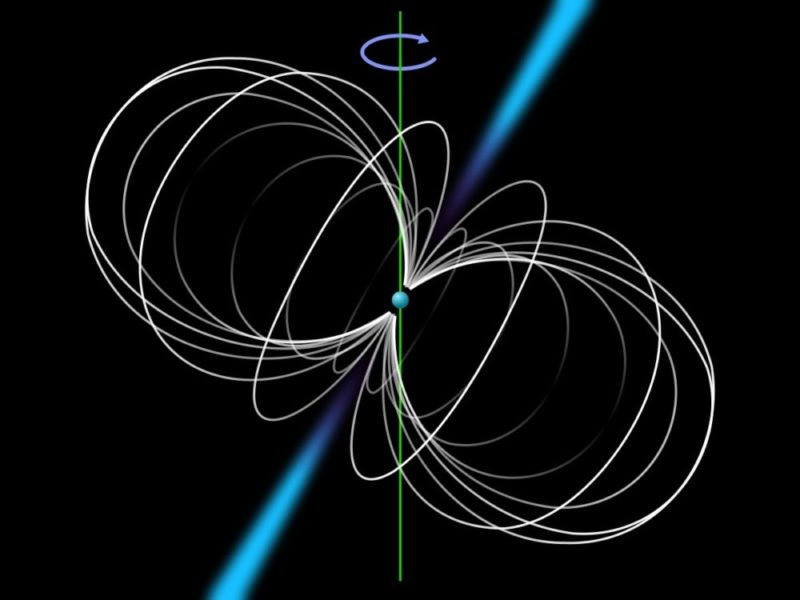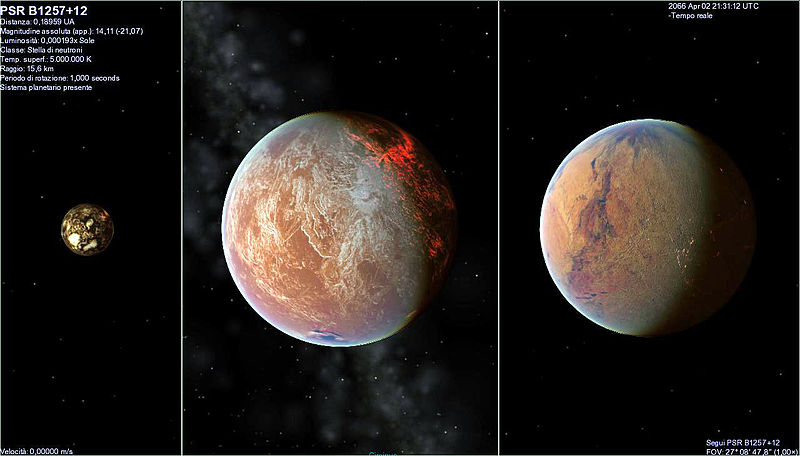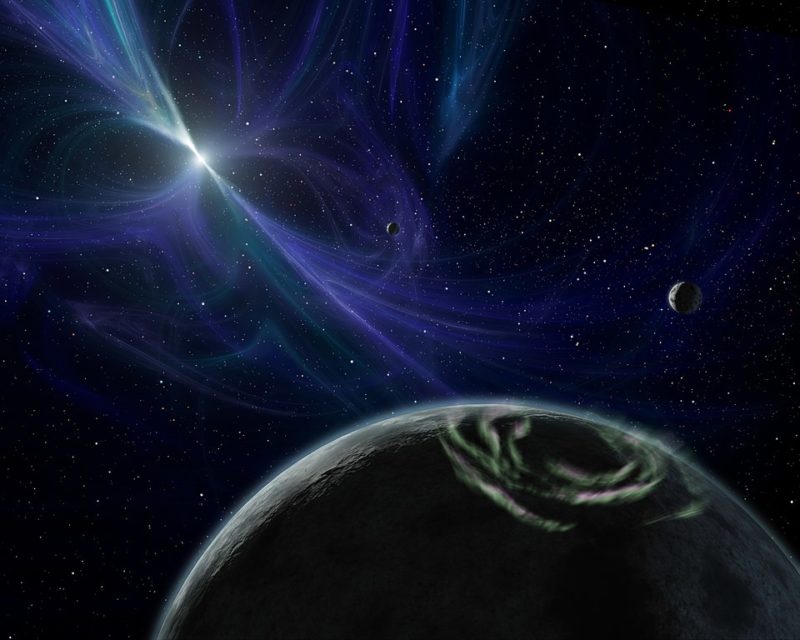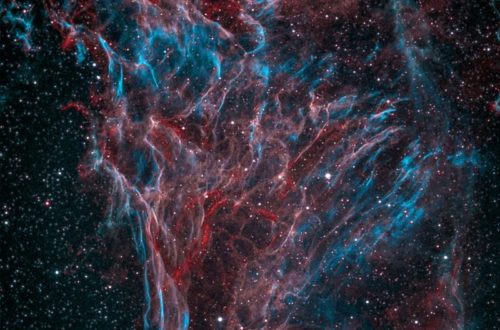A Pulsar With Planets

A pulsar is probably the deadliest object in the Universe. Despite their beauty, you wouldn’t want to get close to one of them! They are a type of neutron star that emits a highly focused beam of electromagnetic radiation from both magnetic poles. This radiation, deadly to any form of life, can only be visible when one of the two beams is turned to face towards the observer (which is hopefully not anywhere close). The radiation is so strong that it would disintegrate the molecular bonds holding together DNA strands, killing any life in the process. Pulsars rotate in an highly stable rate. It’s this rotation that makes them pulse, hence their name. Their rate of pulsations is as regular and precise as an atomic clock.
Pulsar Planets: An Unlikely Discovery
Despite its deadly nature, a pulsar known as PSR B1257+12 (nicknamed Lich), has at least three known planets (Draugr, Poltergeist and Phobetor) orbiting in a close orbit around it. The pulsar was discovered by the Polish astronomer Aleksander Wolszczan in 1990 using the Arecibo radio telescope. In 1992, he and Dale Frail discovered two extra-solar planets (also known as exoplanets) in orbit around the pulsar—the first confirmed exoplanets ever detected. Two years later a third planet was discovered. Since 2002, a dwarf planet with a mass similar to our Moon has been suspected to also orbit the pulsar, though this remains unconfirmed and no new supporting evidence has emerged. If true, this would represent the first (and so far only) known extra-solar dwarf planet. (Note: the Arecibo radio telescope is no longer operational, having collapsed in 2020.)

Life on a Pulsar Planet? Not Likely
Anyone standing on one of those planets would die a very quick death as their DNA is destroyed, but at least he would enjoy a spectacular view as the pulsar beams swirl through the dark sky. Those beams would be very colorful, similar to the aurorae sometimes seen on Earth, except those would be much larger and elongated in a beam shape.

How Did These Planets Get There?
Those planets remain a mystery. Their presence is surprising, given the violent conditions in which pulsars form. A pulsar is formed in the aftermath of a dying star that blows up in a supernova. When that happens any orbiting planets are immediately vaporized by the explosion. If those planets managed to somehow survive the cataclysm it could prove our current theories about supernovae and neutron stars wrong. However there might be another, more probable explanation: those planets could have formed after the supernova from the gases ejected from the dying star. If true, this would mean that planets can form very easily all over the Universe, and do not require relatively calm environments such as the early Solar System. So perhaps planets are much more common than we suspected.
Would you like to receive similar articles by email?





